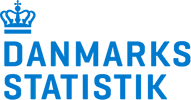Migration and demographic patterns in Central-Eastern Europe
A series of reports "Migration and demographic patterns in Central-Eastern Europe", provides a comprehensive overview of migration and demographic patterns in Central and Eastern European (CEE) countries that are relatively recent member states of the European Union. As the term CEE is rather inclusive of incorporating all the new members of the EU who were before 1989 in the Eastern block, we have created country reports for Bulgaria, Croatia, Czech Republic, Estonia, Hungary, Latvia, Lithuania, Poland, Romania, Slovakia and Slovenia. All of these reports evaluate the demographic situation of a given country with the main focus on immigrant and emigrant stocks and flows, and then contain migration narratives for each country.
Additionally, we have surveyed immigrants coming to CEE, with a special focus on determinants of migration, attitudes, perceptions, and behaviours of migrants as well as issues related to integration and
assimilation. This survey is motivated by the fact that in recent years, most of the EU Member States from Central and Eastern Europe have undergone a transformation from ‘migrant-exporting’ economies into
important destinations. Consequently, it is important to understand whether immigration to these countries is a temporary phenomenon, or the existing migrant communities are well-integrated and foreigners
residing in these countries have plans to settle permanently there. As for the case study for analysis we have selected Poland, the largest CEE country in which we have conducted a survey on a sample of 599
immigrants. The report on the results of this survey is also included in this deliverable.
The reports are the outcome of the deliverable “D.6.3. Report on migration and demographic patterns in the EU CEE countries and potential source countries”, which has been prepared as an activity of the project FUME – Future Migration Scenarios for Europe (870649), financed with the Horizon 2020 programme. Within the WP 6 Perspectives of migration – thematic studies focused on 2 major aims:
(1) delivering data and knowledge on international migration in a local context for building narratives and scenarios, developing the FUME model and
(2) showing possible applications of the model in important spheres of scientifically-driven policy making - e.g. local labour markets, residential segregation, integration of immigrants (schooling).
Access the CEE reports here:









